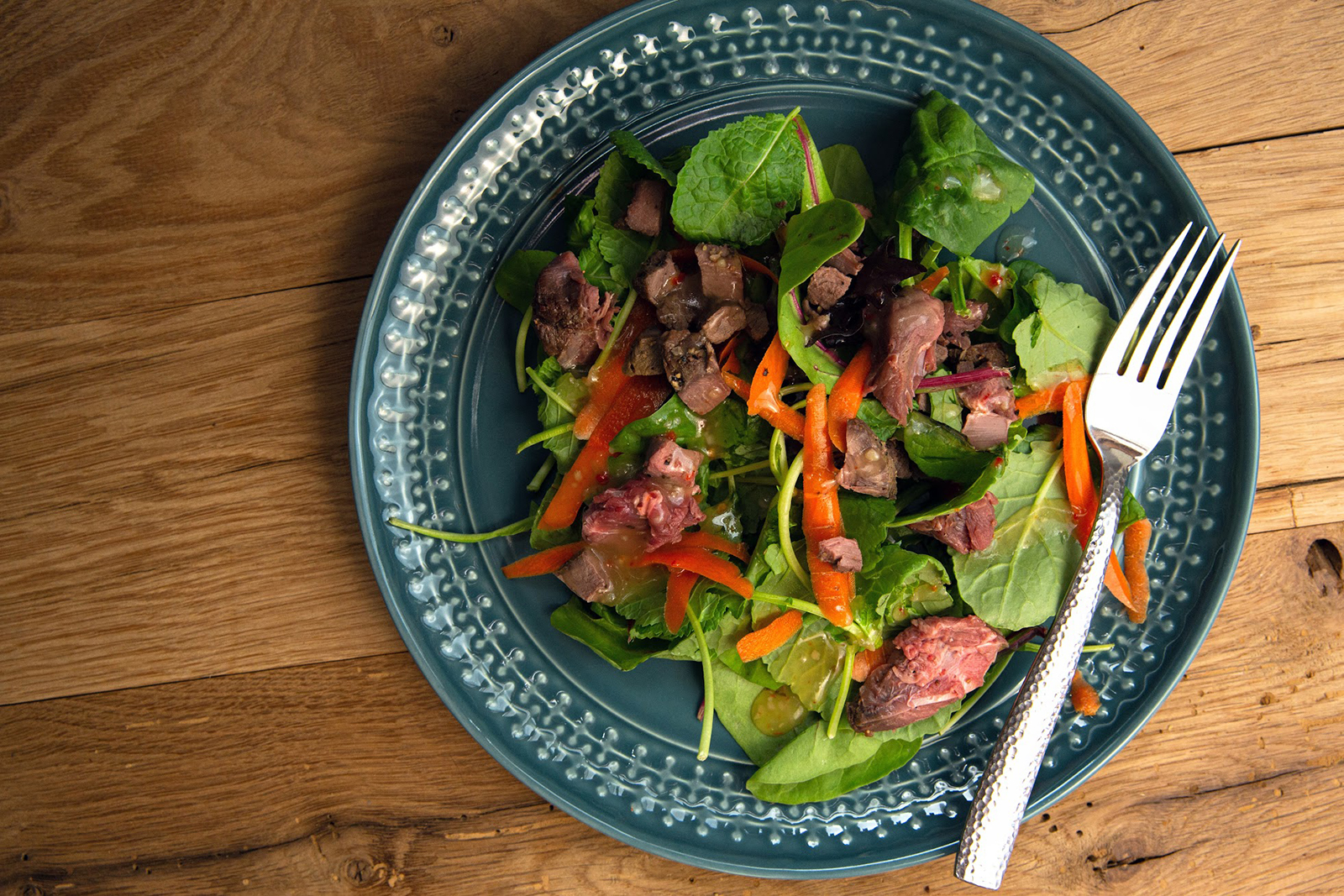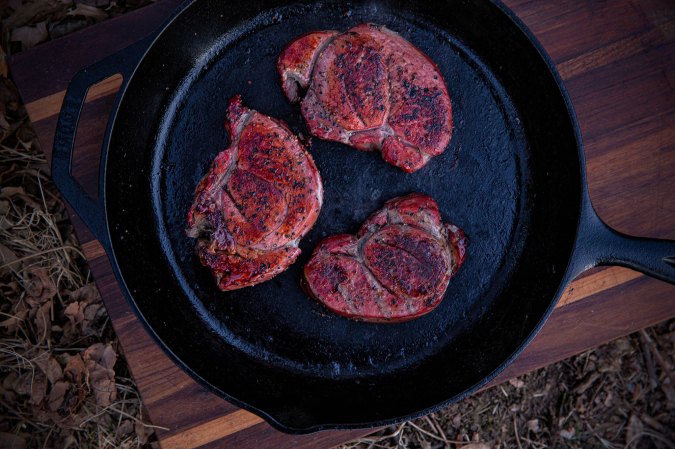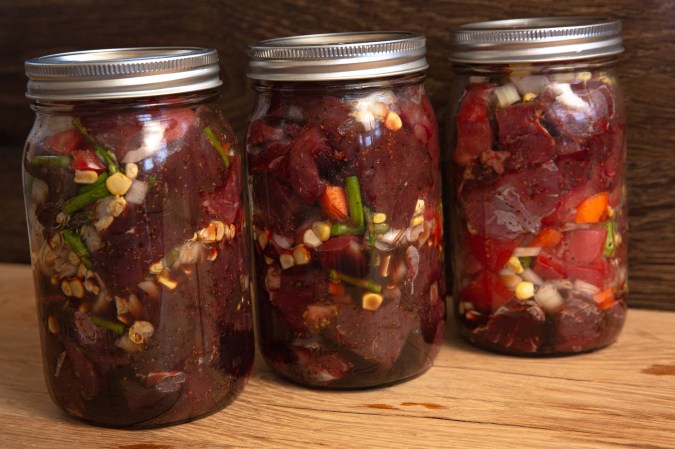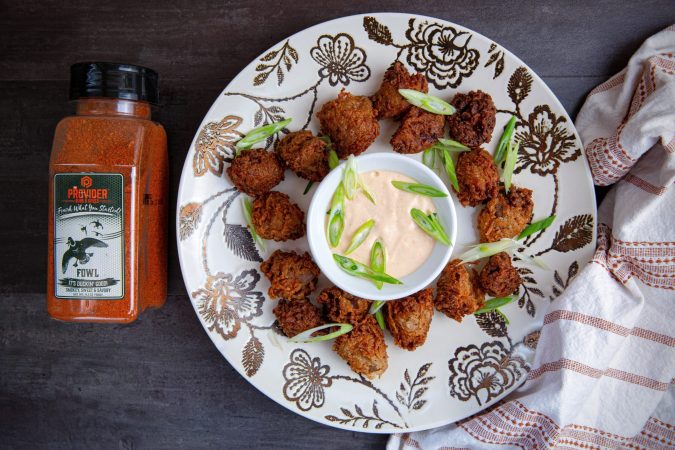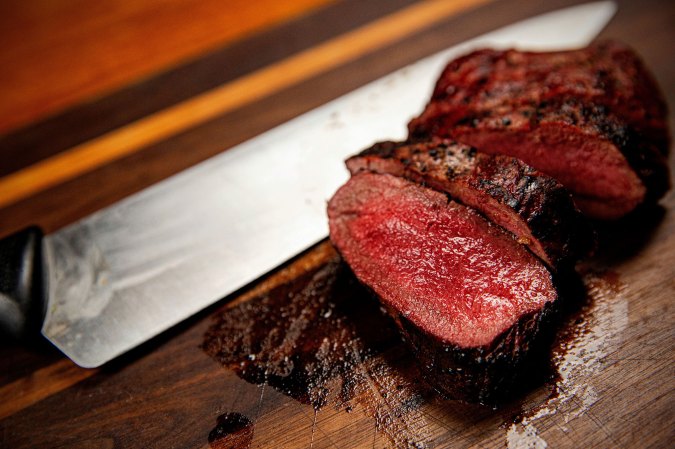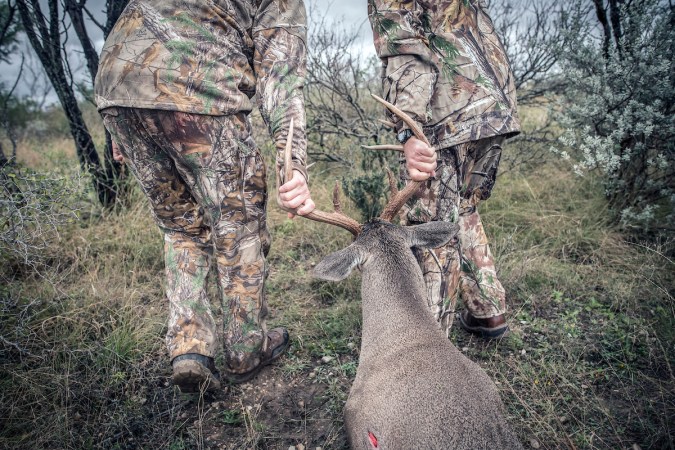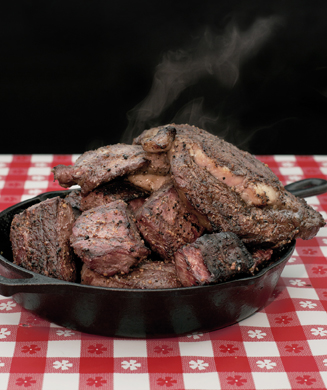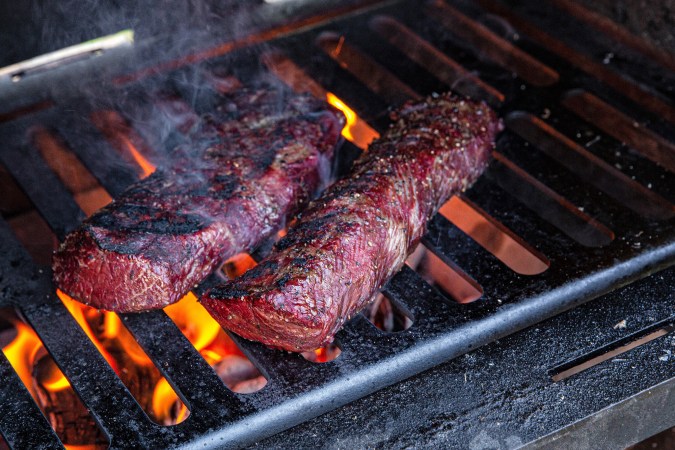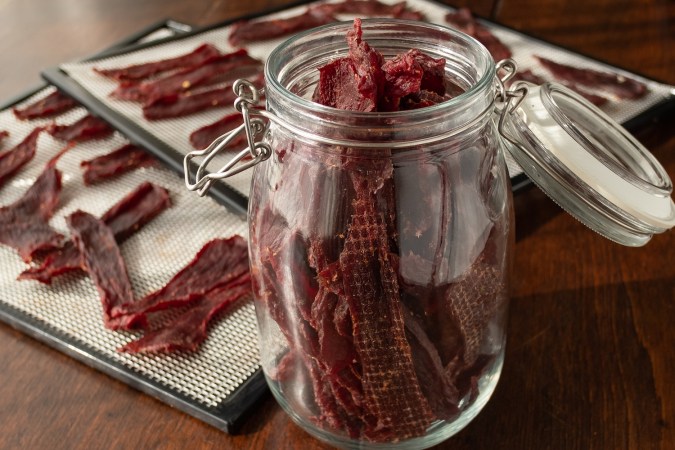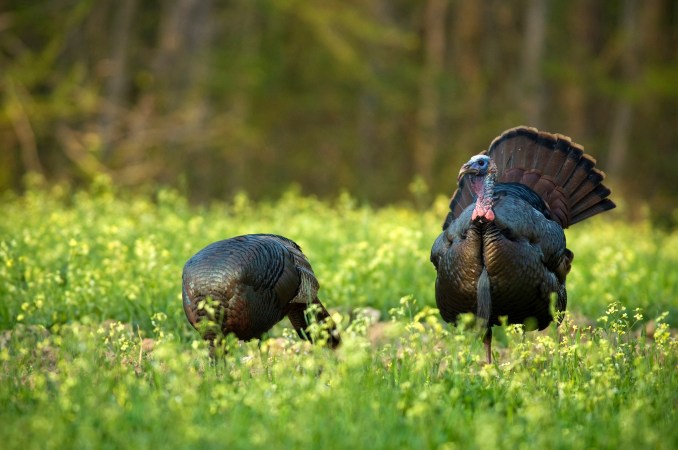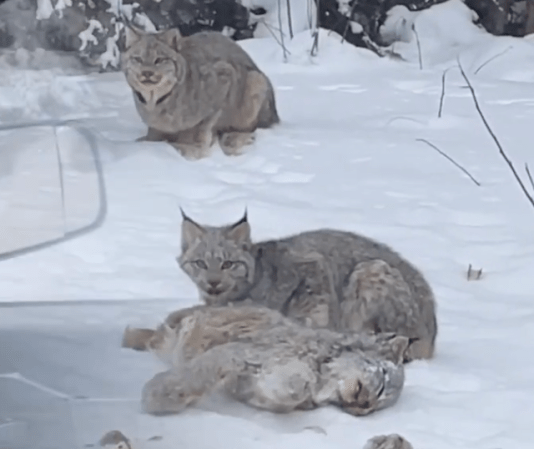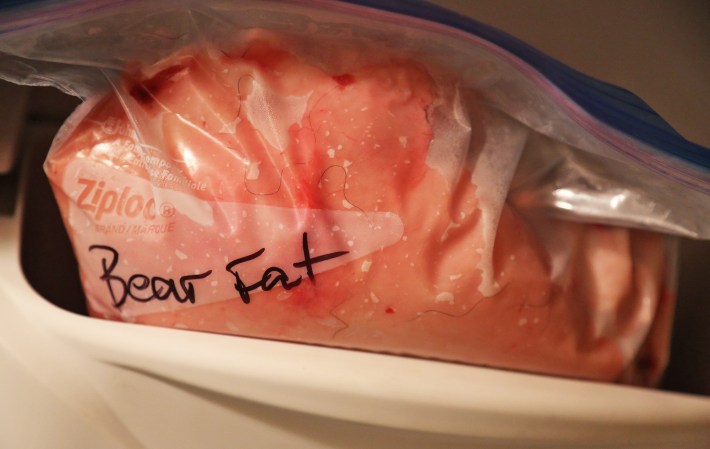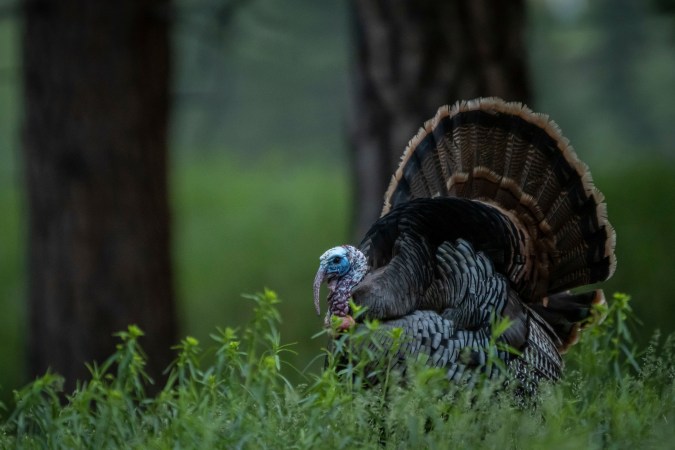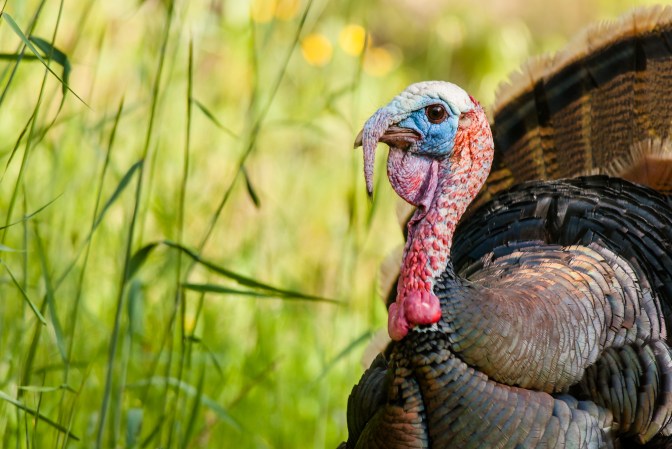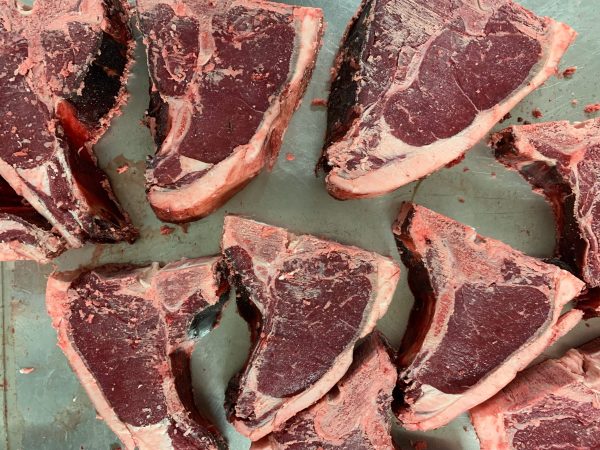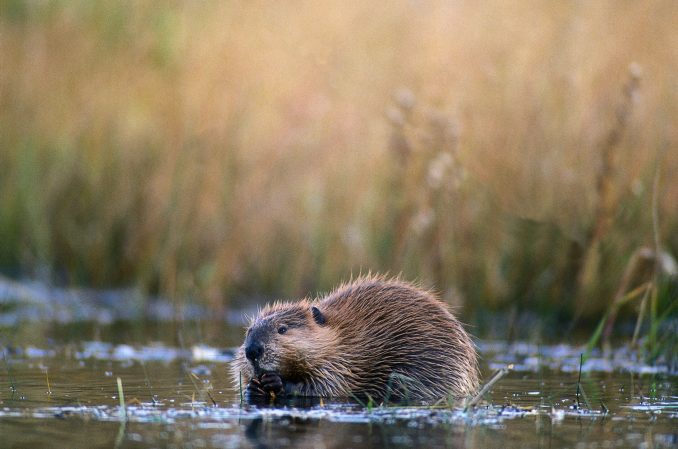You already know: Wild game is one of the healthiest, most nutritious proteins you can put in your body. Wild meat is lean with a high protein-to-calorie count, and it’s void of injected hormones and antibiotics.
So it makes sense to focus on wild game if you’re trying to lose weight, or just eat a more nutritious diet. I know this first hand. I lost 80 pounds in six months. A serious calorie deficit was the main reason, coupled with getting out with the dog, riding an exercise bike, and dragging out deer. I went from 265 pounds to the 185 I am now.
My case was an extreme one. I can nearly guarantee that any dietician would advise against my level of calorie deficit. But still, I think my experience plus the perspectives of a lifelong hunter and registered dietician, which you’ll find below, will be useful to folks with much less extreme health goals. If you want to eat a little better, lose some weight, and live healthier, this story could be a good start. For me, it wasn’t about getting into beach-bod shape or looking good on IG, it was about being healthy enough to hopefully avoid an early, catastrophic heart attack (more on this later).
If any of this sounds relatable to you, then start here before diving into the deep end, continuing your own nutrition research and checking in with a professional.
Wild Game Nutrition Data
Here’s a nutrition chart showing the values of a variety of wild game critters based on a 100-gram, or 3.5-ounce, serving. Info for the chart comes from “Wild Game: A Nutrition Guide for Game Animals in North America.”
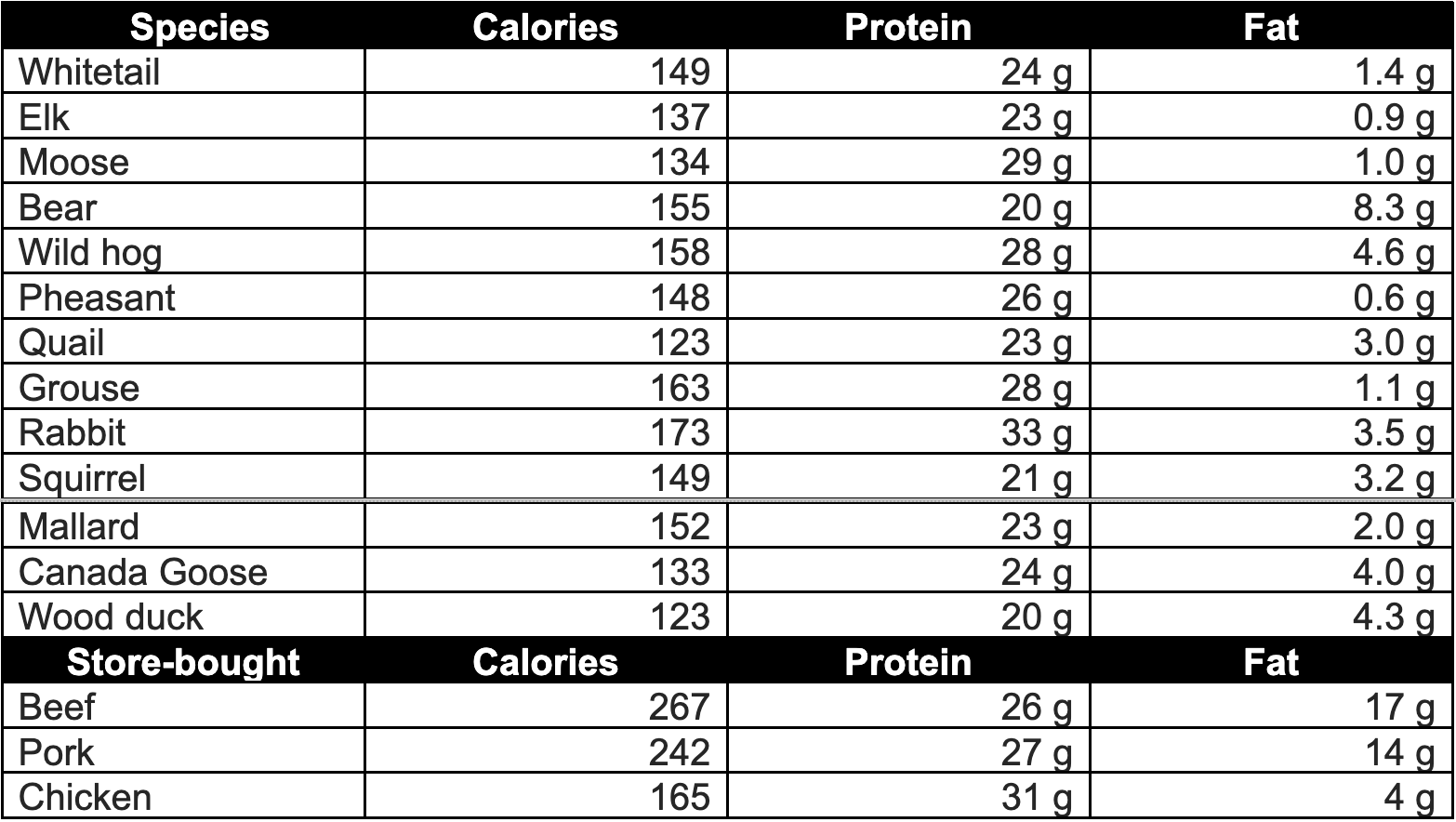
The above numbers are helpful to know, but the benefits of consuming wild game extend past the story of a nutrition label. For example, meat from grain- and corn-fed cattle is high in omega-6 fatty acids, which can increase inflammation in the body and lead to obesity, diabetes, cancer, and rheumatoid arthritis. Venison, however, due to a deer’s diet, contains higher levels of omega-3 fatty acids. People with significant levels of omega 3s in their diets are less likely to experience a heart attack.
Another way to lower your chances of a heart attack or stroke is to eat anything that goes “quack” or “honk.” Duck and goose fat contains a significant amount of monounsaturated fat (versus polyunsaturated fat). Monounsaturated fat can also help reduce bad cholesterol levels in your blood and lower your risk of heart disease and stroke.
Understanding Wild Game and Dieting
Laura Makarewicz, 31, is a registered dietitian at a VA clinic in New Mexico where she focuses on outpatient cardiovascular health. Growing up in Missouri, she first joined her dad in the deer blind at age 3.
When patients tell her they have access to venison, Makarewicz encourages putting it on the plate as much as possible. “I assure them, ‘That is a great protein source.”
Fat is not a bad thing, but according to Makarewicz we get plenty of fats from other sources. When selecting a meat, leaner is better. This is where wild game comes into play.
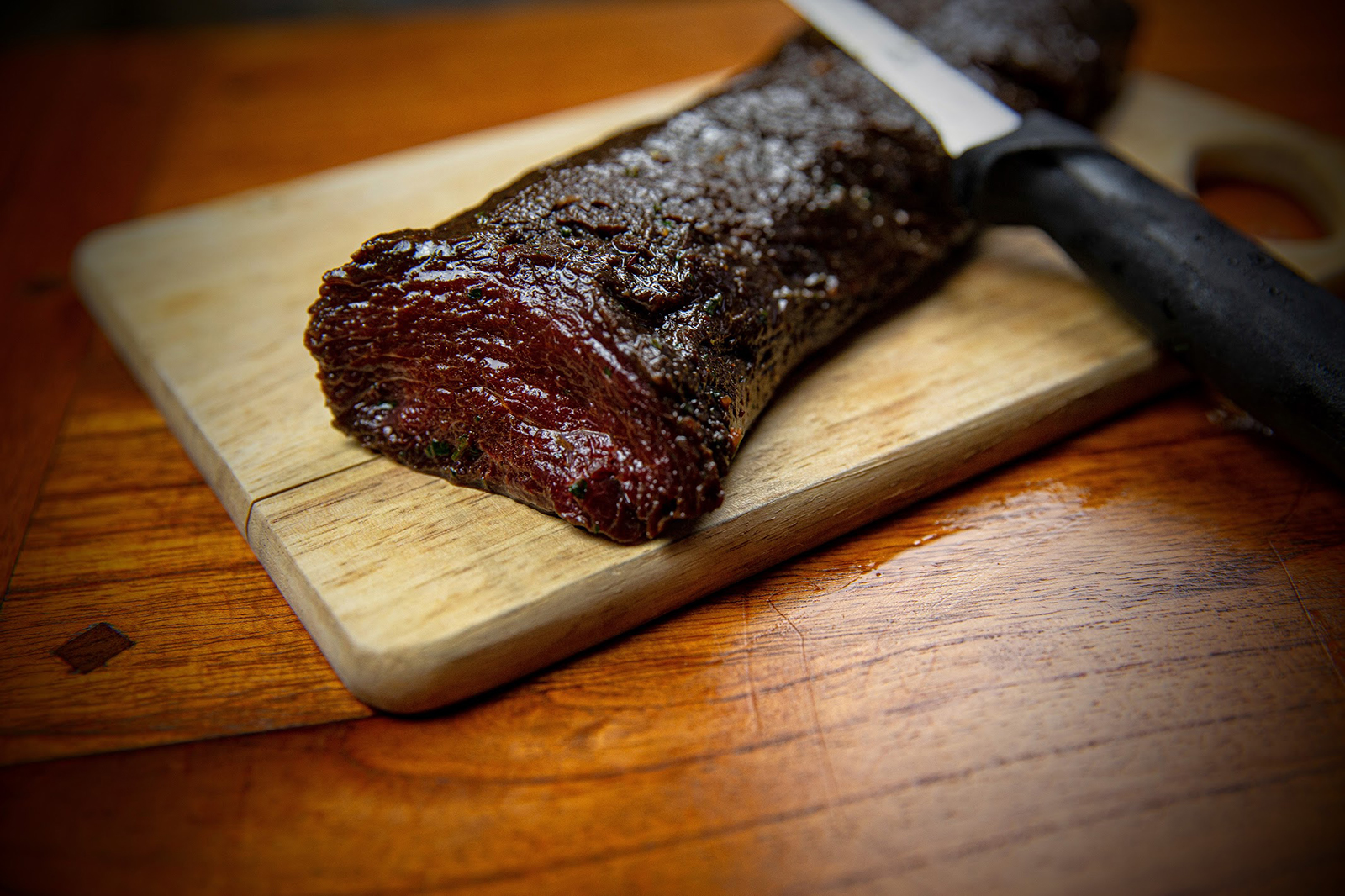
The key is not adding unnecessary fats and sugars while cooking wild game. Too often home cooks preparing wild game look to mask the “gamey-ness” with the addition of unhealthy ingredients. Whether it’s a can of cream of mushroom soup (a Minnesota staple for every wild-game recipe), a blanket of beer cheese, or any number of sugary marinades and sauces, that lean wild game’s calorie count grows exponentially during cooking.
READ NEXT: Beef vs. Venison
The truth is, wild game that’s prepared without all those additions tastes just the way it’s supposed to taste, unless it wasn’t properly cared for in the field (or if it was a bruiser buck shot during the rut.)
For those trying to lose weight (and for those trying wild game for the first time), I recommend meat seasoned solely with salt and pepper. The innate flavors of a borderline rare whitetail backstrap are delicious and unique. There’s no need to mask them. Here’s another thing: The more that you eat wild game the way it’s supposed to taste, the more you will recalibrate your taste buds to wild game. Chicken and beef will start to taste bland. Your mouth and stomach will crave backstrap and other wild game with “personality.”
READ NEXT: Best Wireless Meat Thermometers
Fruits, Vegetables, and Grains
Another good tip is to add plenty of fruits and vegetables, specifically ones that have bright color. Think bell peppers and broccoli over russet potatoes. Makarewicz advises that 45 to 60 percent of one’s diet should consist of carbs, but in the form of colorful fruits and vegetables. If you’re including grains, again opt for color. Choose the whole grain bread over the white bread. For grains, you want at least 5 grams of fiber per serving (check the nutrition label to confirm this.) If cooking with oils, choose olive or avocado, not butter, in an effort to avoid saturated fats. Hint: Healthy, unsaturated fat is liquid at room temperature.
How I Did It
Let me be clear: no health professional would recommend doing what I did, and I don’t suggest that you follow my extreme approach. But maybe you can find some helpful motivation for eliminating bad eating habits and replacing them with good ones. If I could do it, so can you.
My daily calorie requirement likely falls between 1,800 and 2,200 calories (depending on the day and my activity levels). During the first two and a half months of my diet, I kept my calorie count to an average of 700 calories. “That’s borderline starvation,” my doctor told me.
But it worked for me. I stayed hydrated, incorporated a bit of exercise throughout the week to keep muscles active and to support my metabolism. I made sure I took in ample protein for both lunch and dinner. On days when I had plans to put in several miles afield or potentially drag out a deer, I raised my calorie count accordingly.
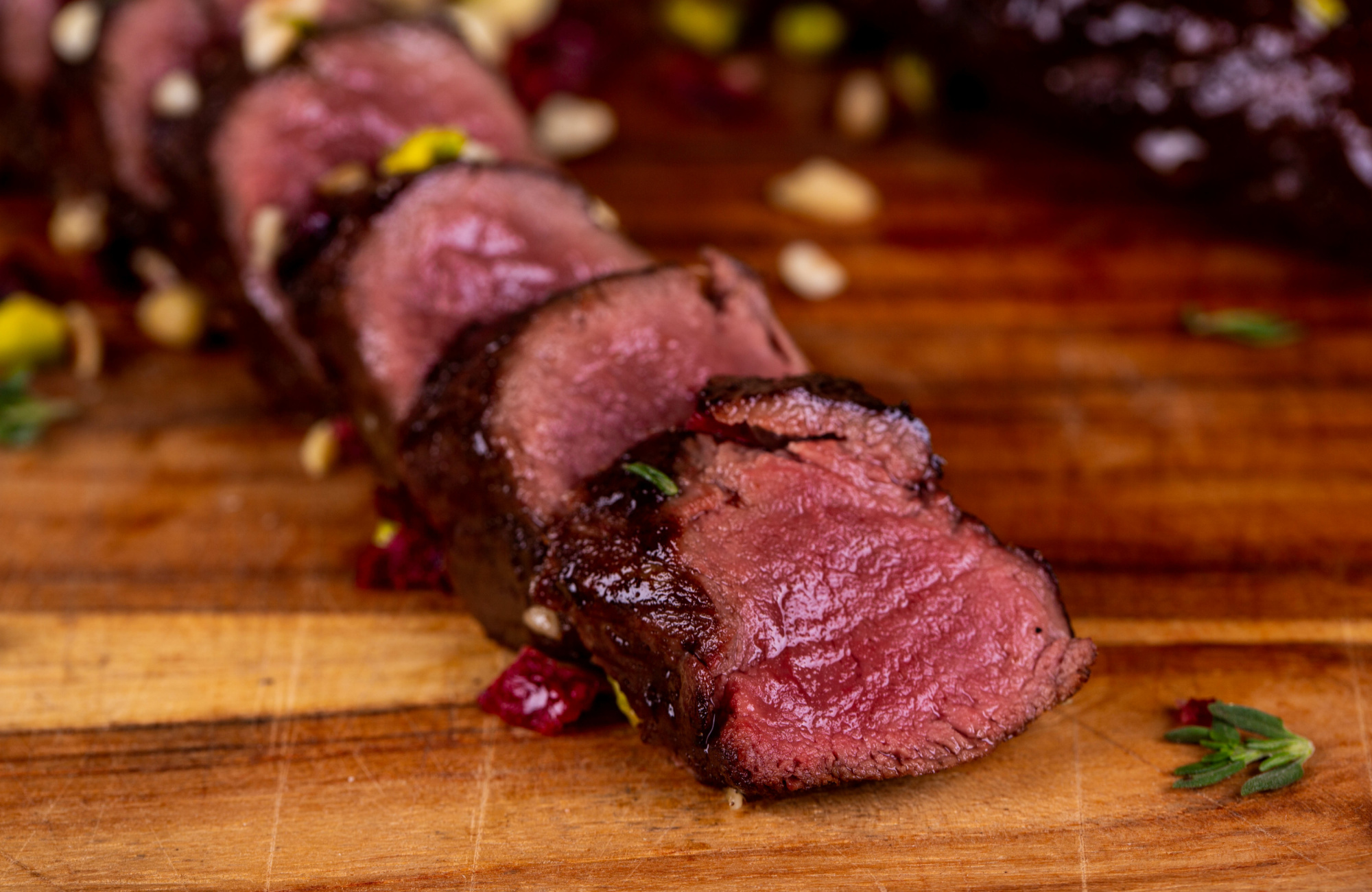
An average day looked like this:
- 150 calories worth of steel-cut oats for breakfast
- 200 calories from a salad (low-fat Italian or Catalina dressing) with one carrot and 4 ounces of venison
- A similar dinner for another 200 calories
- Approximately 150 calories worth of snacks throughout the day
Initially, I was losing at least a pound a day, more like 10 pounds a week. For the serving of venison, it could have been shavings from a backstrap or top round I grilled the weekend prior, or simply ground venison seasoned with taco spices (no sugar). Salsa is a great salad dressing substitute. So is buffalo sauce, like the medium offering from Buffalo Wild Wings. Crumbling a few tortilla chips or a little bleu cheese overtop isn’t bad, either.
Health professionals recommend raising your calorie intake by 100 calories per week following a diet, until you reach your “maintain” level. Logic being: Your body requires time to adjust. I didn’t do that, either. After my 700-calorie period, I moved up to 1,200 calories for a month or so, then 1,600 for the remainder of the 6-month period. In the later phases, with the higher calorie allowance, I incorporated less-lean game meats like skin-on Canada goose.
I started to recognize my body had settled around 184 pounds, where it remains now, nine months since I began.
To continue to maintain, I make a point to eliminate white bread and white grains from my diet. I pay the extra money for Ghee (clarified butter) over regular butter for when I want that butter flavor in my cooking. In terms of potatoes, especially the fried kind, it’s almost as if a hypnotist got to me at some point, because fried potatoes, which I used to love, sound unappetizing now. My potato-loving Irish ancestors are likely turning over in their graves.
I’m lucky to have access to a seemingly endless supply of ground venison. That is what my wife and I use for any dish requiring ground meat. I have a lot of chukar in the freezer, alongside a limited supply of pheasant and quail. If I am not tapping into that assortment, I am buying chicken from the store.
And here’s a big secret reveal: I ate a lot of tofu during the first two and a half months of my diet. It was cheap and easy to prep for the week. Did it taste like clumps of wet toilet paper? You betcha. But it worked for my diet. Hopefully my tofu days are over now.
Getting Healthy Is About a Lot More Than Diet
“If you are just focusing on one aspect as opposed to making a true lifestyle change, you’re maybe going to get the results you that you want for three or six months, maybe a year,” Makarewicz says. “But if you’re not making a complete lifestyle change, most people aren’t going to get to the goal that they want. Focusing on foods that are nutritious is way more important than focusing on ‘healthy’ foods.”
For example, sugar is often portrayed as bad for you, but for athletes with weekly rigorous routines, added sugars are essential to fuel the body.
Plus, being so restrictive to the point that you can’t keep up your routine is why most people fail to reach their goals.
“Some people come in and say they are never going to have cake again,” Makarewicz says. “‘Really?’ I ask. ‘You’re not going to eat cake on your birthday? Are you a sadist?’”
Your goal may begin with a calorie deficit approach (like mine did), but Makarewicz advises counting calories should serve only as an initial approach. The following concepts are more focused and offer a high chance of long-term success:
- Know your goal. Visit a professional. Get a plan and be realistic with a long-term lifestyle in mind.
- Counting calories is not sustainable but if doing so helps, apps like MyFitnessPal can be useful.
- Get a scale but weigh in once a week. More often than that can result in you getting in your head and potentially straying from the plan. Remember: body weight naturally fluctuates day-to-day.
- Incorporate regular exercise into your routine as lean muscle is key to maintaining a proper metabolism and burning fat.
- Stay hydrated. Fitness in both body and mind is largely the result of proper hydration.
- Avoid alcohol. There is absolutely zero nutritional value in it, regardless of the old adage, “A glass of red wine a day…” It also dehydrates you.
- Moderation is best, and that is in regard to everything you consume. That means, yes, you can have cake.
- Control your portions. If you refer to the nutrition guide above, you’ll see a serving portion of meat is 100 grams (or 3.5 ounces), which is basically a deck of cards. (So yes, you can overeat when it comes to wild game.)
- Eat often, ideally every 3-4 hours, versus splurging on calories for one meal, which can cause your body to become dysregulated.
Don’t Trust Google
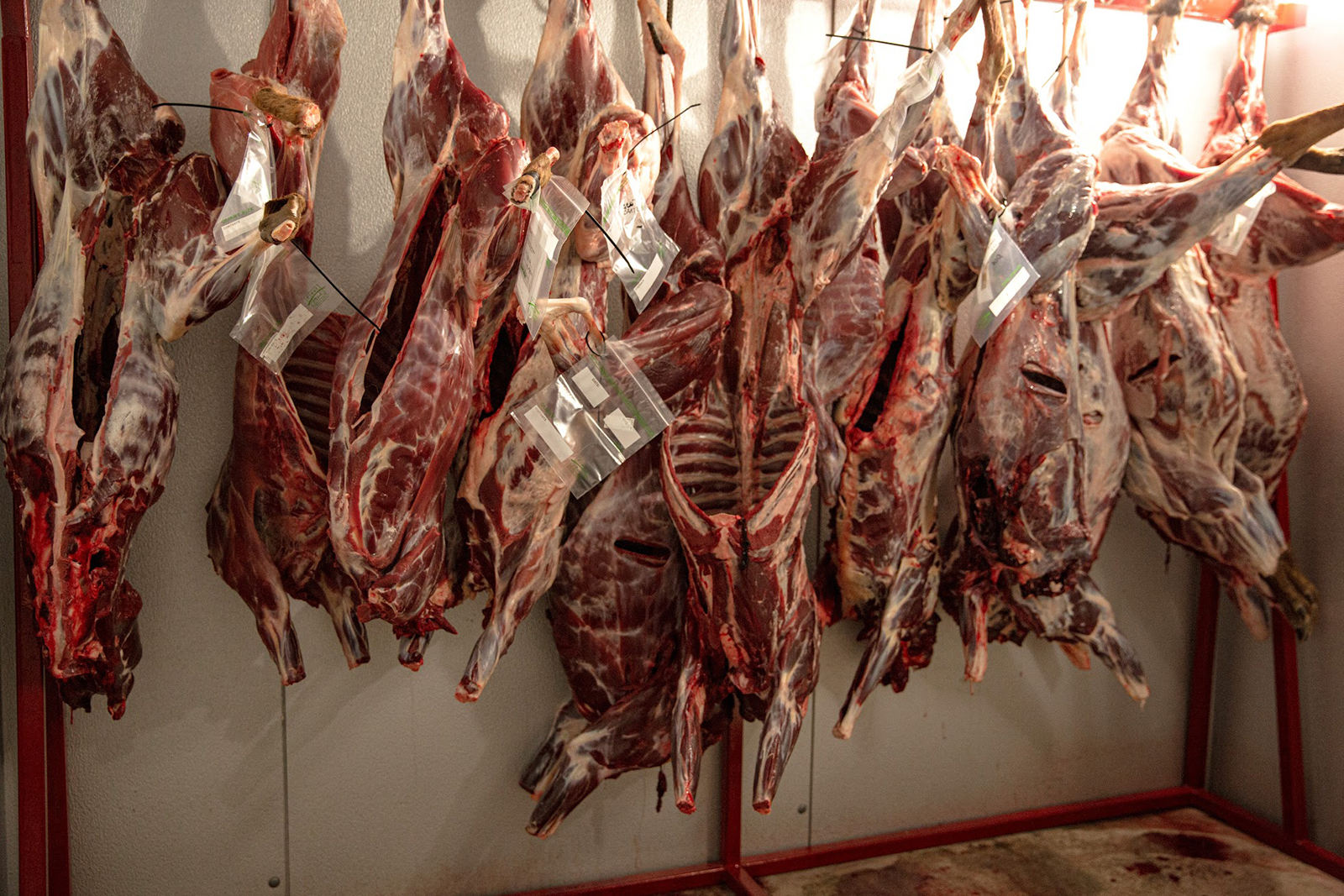
For anyone looking for a focused, nutritious diet, Makarewicz advises meeting with a registered dietitian once or twice. Don’t just start scouring Google for dieting information.
“I will Google the same question that patients ask me, and the stuff that comes up is absolutely insane,” she says.
There are a lot of varying opinions and ideas in the field of nutrition. When so many online sources are looking to turn a profit off their portrayal of “nutrition,” instead choose to trust a professional and the freezer of wild game in your basement.
“This stuff changes a fair amount, which makes it more confusing,” says Makarewwicz. “The food industry doesn’t make anyone’s lives any easier.”
Get help from someone who can actually offer a solid plan. Head into the meeting fully understanding your goals, first and foremost. “I can educate people until I am blue in face,” said Makarewicz, “but if they don’t know why they want to change … That is one thing I can’t teach people: motivation.”
Why I Did It

Last summer my father-in-law, at the age of 71, had a heart attack. He underwent a sextuple bypass, experienced complications, had a second surgery to correct internal bleeding. Then, upon returning home, he almost died from the collective total of a 21-inch blood clot. Months prior his older brother had passed away from cancer after, doctors believe, suffering through a couple strokes. My mother-in-law’s younger brother, in April of last year, passed away from a heart attack at the age of 63. Through it all, I witnessed the toll it took on my mother-in-law and my wife. I drove her almost daily to visit her father in the hospital.
My 5-year-old daughter saw all this and did her best to understand the funerals and hospital visits. A week into her pa-da’s recovery, I was reading her a story at bedtime when she interrupted me, “Dad, you need to lose weight.”
At 265 pounds, I knew she was right, but wanted to know her reasoning.
“Why?” I asked. “Because I don’t want you to die,” she said.
That was the breaking point for me. I took a hard look at myself in September 2022 and made the clear decision: It was time to quit the B.S.
One of my best friends was on his own weight-loss journey and served as a mentor to me. His first piece of advice was on point: “Eat right. Get a scale. See the difference after a week. You’ll never look back.”
Through the process, I thought about what it means to be a hunter, the origins of hunting, the primitive nature of it all, and how honoring the kill is about more than just what happens afield. Homage is paid in the scouting, in the miles you travel, in the work you do at the range. Hunters have a reverence for hard work. So it makes perfect sense to continue working after the tag is punched and the meat carving is done. Work for yourself, and for those who matter most to you.
Reach out to me on Instagram (@WildGameJack).

